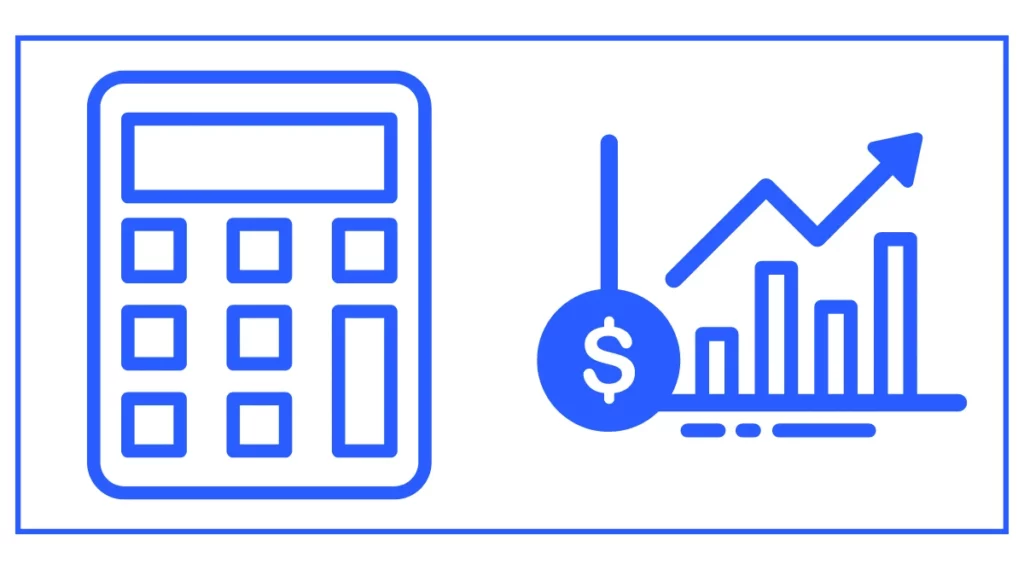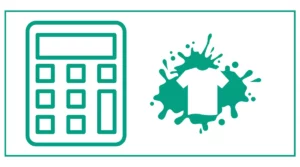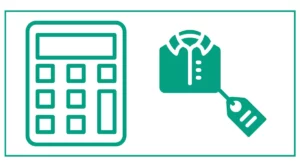ROAS Calculator ( Return on Ad Spend)
Are you an internet marketer?
Whether you run Google ads or social media ads like Facebook, Youtube, Twitter, or tiktok, etc., you need to have a goal in the form of return on ad spend.
This ROAS calculator helps you calculate how much percentage of return you will be able to gain from your ad spending.
Enter your ad spend and ad revenue target to find the ROAS percentage.
You can also choose the “I don’t know my revenue” option. The calculator will calculate the suitable revenue for your automatically.
The ROAS percentage is shown below the calculate button.

You might want to split your bill with your colleagues if it is too much.
What is ROAS?
ROAS, which stands for Return on Ad Spend, is a metric used to measure the effectiveness of your advertising campaigns. It tells you how much revenue you’re earning for every dollar spent on ads. By calculating ROAS, you can determine whether your ad campaigns are profitable and make informed decisions about your advertising budget.
How to Calculate ROAS
The ROAS formula is simple:
ROAS = (Revenue from Ad Campaign / Cost of Ad Campaign) x 100
For example, if you spend $1000 on an ad campaign and it generates $5000 in revenue, your ROAS would be:
($5000 / $1000) x 100 = 500%
This means that for every dollar spent on ads, you’re earning $5 in revenue.
Using Our Free ROAS Calculator
To make calculating your ROAS easier, we’ve provided a free ROAS calculator above. Here’s how to use it:
- Enter your ad spend in the “Ad spend” field.
- Choose whether you know your revenue or not.
- If you know your revenue, enter it in the “Ad revenue target” field.
- If you don’t know your revenue, the calculator will estimate it based on your ad spend.
- Click “Calculate ROAS” to see your result.
The calculator will display your ROAS as a percentage, making it easy to understand at a glance.
Understanding Your ROAS Results
Once you’ve calculated your ROAS, it’s important to interpret the results correctly. Here’s what different ROAS percentages might mean:
- Less than 100%: You’re losing money on your ad campaign.
- 100%: You’re breaking even.
- 200-400%: This is generally considered a good ROAS for most industries.
- 400% or higher: Your ad campaign is performing exceptionally well.
Keep in mind that a good ROAS can vary depending on your industry, profit margins, and overall business goals.
Why ROAS Matters
ROAS is a crucial metric for several reasons:
- Evaluating Ad Performance: ROAS helps you determine which ad campaigns are most effective at generating revenue.
- Budget Allocation: By knowing your ROAS, you can make informed decisions about where to allocate your advertising budget.
- Optimizing Campaigns: ROAS can guide you in optimizing your ad campaigns for better performance.
- Comparing Platforms: You can use ROAS to compare the effectiveness of different advertising platforms or strategies.
ROAS vs. ROI: Understanding the Difference
While ROAS and ROI (Return on Investment) are related, they’re not the same. ROI takes into account the total cost of your investment, including factors like production costs and overhead. ROAS, on the other hand, focuses specifically on the amount spent on advertising.
For example, if you spend $1000 on ads and $500 on production costs, and generate $5000 in revenue, your calculations would look like this:
ROAS = ($5000 / $1000) x 100 = 500%
ROI = (($5000 – $1500) / $1500) x 100 = 233%
Both metrics are valuable, but ROAS is particularly useful for evaluating the direct impact of your ad spend.
Factors That Affect ROAS
Several factors can influence your ROAS:
- Ad Quality: Well-designed, targeted ads tend to perform better.
- Landing Page Quality: The page users land on after clicking your ad should be optimized for conversions.
- Keyword Selection: For PPC campaigns, choosing the right keywords is crucial.
- Targeting: Reaching the right audience can significantly improve your ROAS.
- Ad Platform: Different platforms (e.g., Google Ads, Facebook Ads) may yield different results.
- Industry: Some industries naturally have higher or lower ROAS benchmarks.
How to Improve Your ROAS
If your ROAS isn’t as high as you’d like, consider these strategies to improve it:
- Refine Your Targeting: Ensure your ads are reaching the most relevant audience.
- Optimize Your Landing Pages: Improve your landing pages to increase conversion rates.
- Test Different Ad Formats: Experiment with various ad types to see what works best.
- Adjust Your Bid Strategy: For PPC campaigns, fine-tune your bidding to maximize efficiency.
- Improve Ad Quality: Create more compelling ad copy and visuals.
- Focus on High-Performing Keywords: Allocate more budget to keywords that generate the best ROAS.
- Consider Retargeting: Retargeting campaigns often yield higher ROAS.
ROAS and E-commerce
For e-commerce businesses, ROAS is particularly important. In this context, ROAS helps you understand how much revenue your product ads are generating compared to their cost. A good ROAS for e-commerce can vary, but many businesses aim for at least 400%.
When calculating ROAS for e-commerce, be sure to consider factors like:
- Average order value
- Customer lifetime value
- Profit margins on different products
These factors can help you determine what ROAS you need to achieve to make your advertising efforts profitable.
ROAS in Different Marketing Channels
ROAS can vary significantly across different marketing channels. Here’s a brief overview:
- Search Engine Marketing (SEM): Often yields high ROAS due to high intent searches.
- Social Media Advertising: Can be effective for brand awareness and retargeting.
- Display Advertising: Generally has lower ROAS but can be good for brand visibility.
- Email Marketing: Usually has high ROAS due to low costs.
- Affiliate Marketing: Can have variable ROAS depending on commission structures.
Understanding these differences can help you allocate your marketing budget more effectively.
Limitations of ROAS
While ROAS is a valuable metric, it’s important to understand its limitations:
- It doesn’t account for profit margins: A high ROAS doesn’t necessarily mean high profits if your margins are low.
- It doesn’t consider long-term value: ROAS focuses on immediate revenue, not customer lifetime value.
- It may not reflect brand building efforts: Some campaigns aim to increase brand awareness, which isn’t directly measured by ROAS.
- It doesn’t account for all costs: ROAS only considers ad spend, not other related expenses.
Because of these limitations, it’s important to use ROAS in conjunction with other metrics for a complete picture of your advertising performance.






